Joyoung Soy Milk Machine, the fighter among soy milk machines~A product’s success has its inevitable reasons. When it comes to soy milk machines, the first name that comes to mind is probably Joyoung, which has almost become synonymous with soy milk machines.Today, we will disassemble a soy milk machine and look at it from the perspective of circuit design, to see what mysterious weapons it uses.Finally, I have also organized a circuit diagram for everyone, perhaps we can gain some inspiration from it! As shown in the figure, this Joyoung soy milk machine is very simple to operate: add soybeans and water, select the soy milk option, and press start, and it will begin to work with a buzzing sound, allowing you to enjoy delicious soy milk in a while. Of course, it can also make fruit and vegetable juice, corn paste, mung bean salad, etc., with a total of eight options. Different selections correspond to different processing programs.
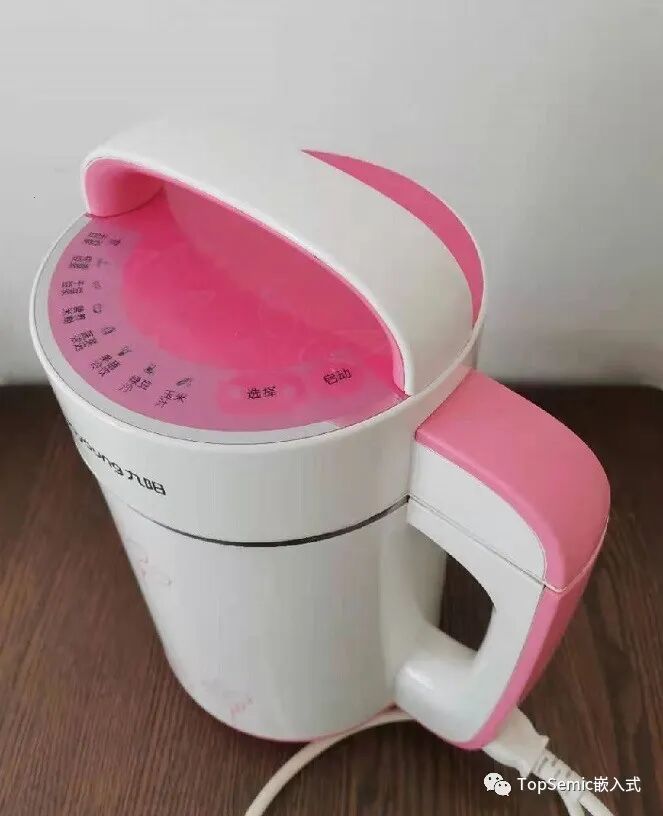
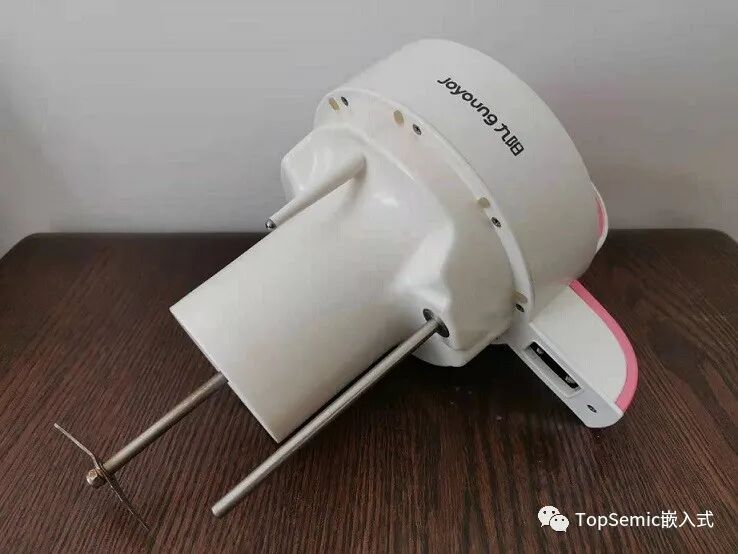
This product has a very simple design and is relatively easy to clean. In the image, besides the stirrer, the long metal rod is hollow and contains a temperature sensor, while the short metal rod is used to detect the water level to prevent overflow.Next, let’s open it up and take a look at the internal circuits!
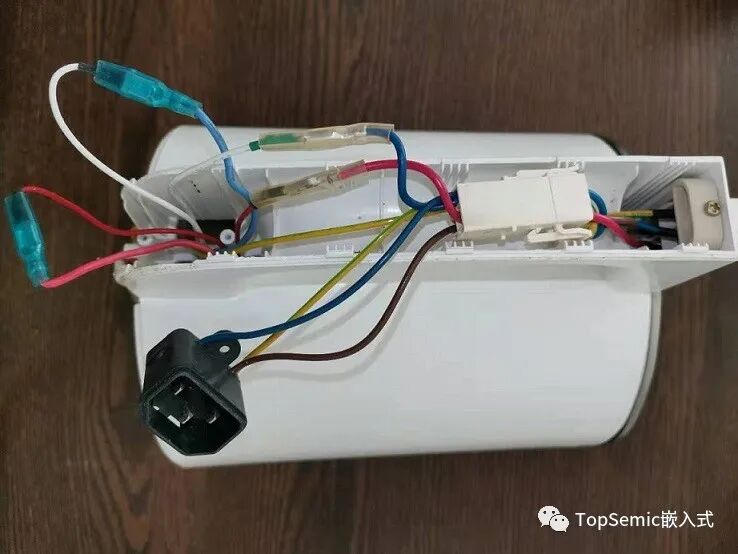
The above image shows the internal power supply wiring of the handle. The blue wire is N, the brown wire is L, the yellow-green wire is the protective ground wire PE, and the red wire is the power supply line after the relay on the control board, leading to the heating wire at the base.
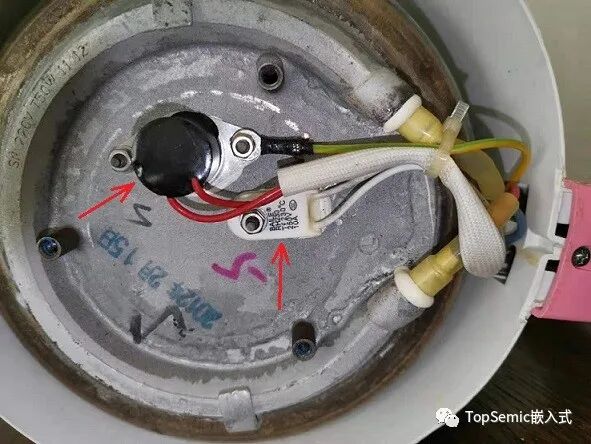
The raised circle contains the heating wire. At both ends of the heating wire, a temperature control switch (the black component in the image) and an over-temperature fuse (the white component in the image) are connected in series.The white fuse model is BAILE RH230 Tf230 250V 10A, which will blow when the temperature exceeds 230°C.The black component model is CDM KSD301 250V 10A 135, which will open when the temperature exceeds135°C. Unlike the fuse, it will close again when the temperature drops.These two components form a double insurance for over-temperature protection, which is quite reassuring.Next, let’s focus on the electrical control part.
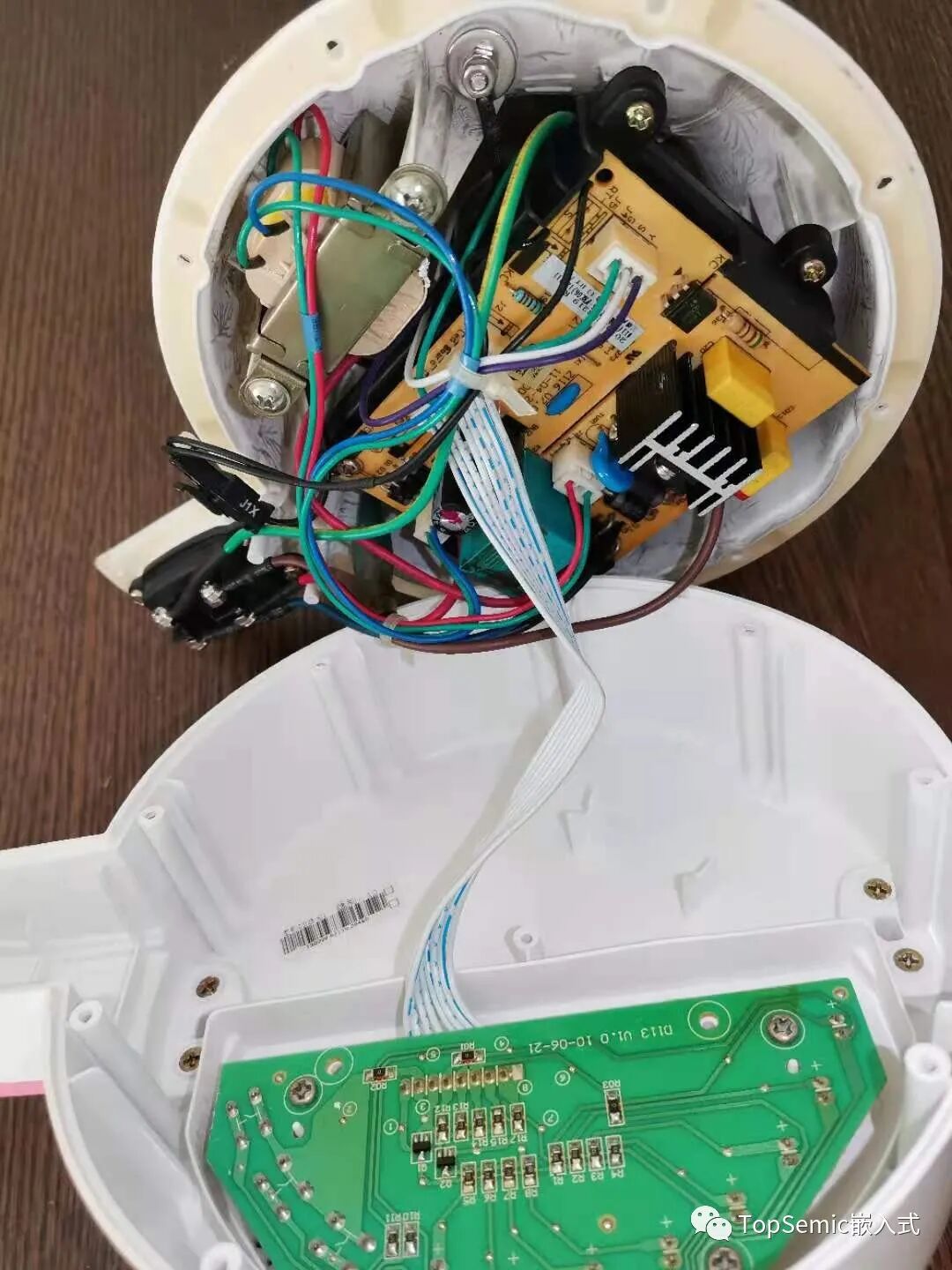
The main control board is a single-layer board, just like most consumer appliances, which saves costs. The transformer reduces the 220V voltage to a low voltage, which is then rectified and filtered to supply the electrical control part. The lower green circuit board is for buttons and indicator lights.
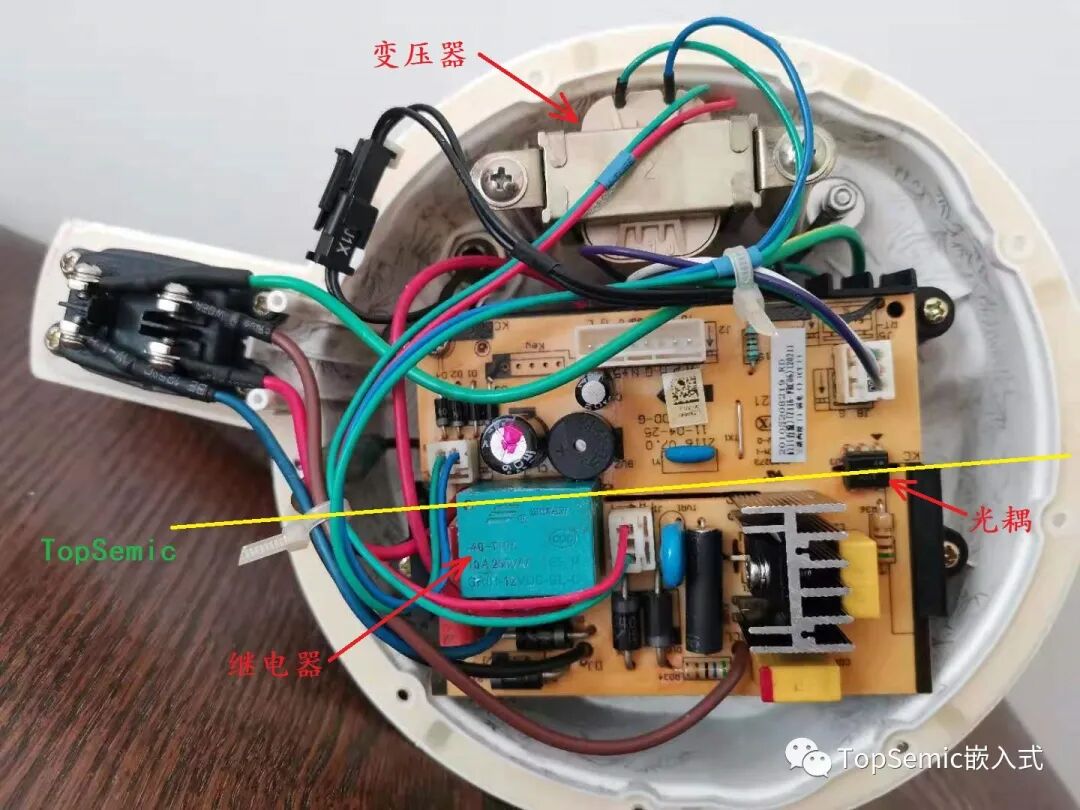
The control board is isolated by three components (transformer, relay, optocoupler), with the lower part being high voltage and the upper part being low voltage. The long slot in the middle of the circuit board further enhances the isolation between high and low voltage, preventing high voltage creepage.Well, this product design is still acceptable~The back of the board, as shown in the figure below:
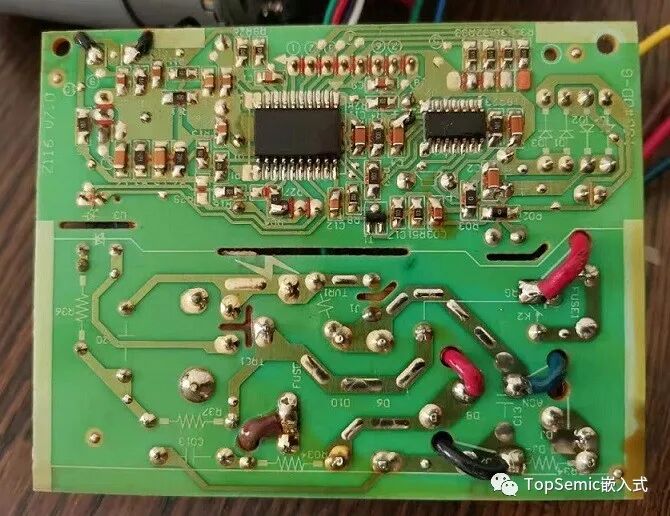
The main control chip is a domestic product, the Zhongying 4-bit machine SH69P42, OTP type. Although the chip is small, it is fully equipped:3K OTP ROM, 192×4 bits RAM, 8-bit SAR ADC, 16 I/O, 2 Timer, 2 Ch PWM, such a configuration is sufficient for this small appliance. However, some people always say that “domestic microcontrollers are not reliable, and their EMC performance is poor,” but I don’t see it that way!
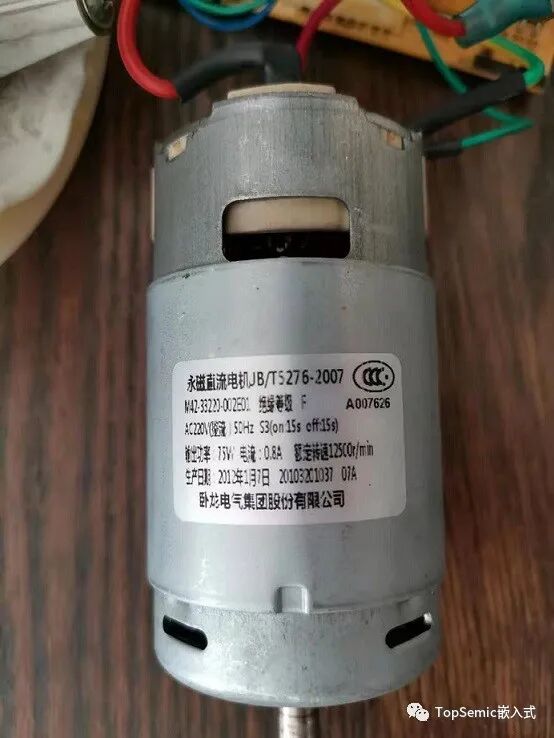
The motor is a very important component, and we can see that it uses a permanent magnet DC motor from Wolong Electric, which has a very high speed of up to 12500r/min, model JB/T5276-2007, with main parameters of AC220V rectified 50Hz, 75W, 0.8A.Well, those who can patiently read this far must be knowledgeable!Alright, without further ado, here are some components for you to appreciate:
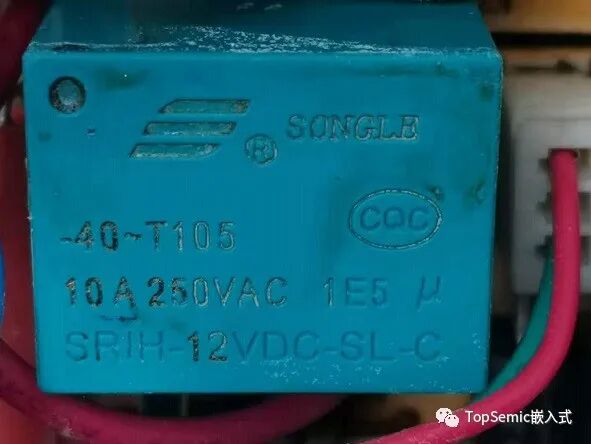
▲ Songle Relay
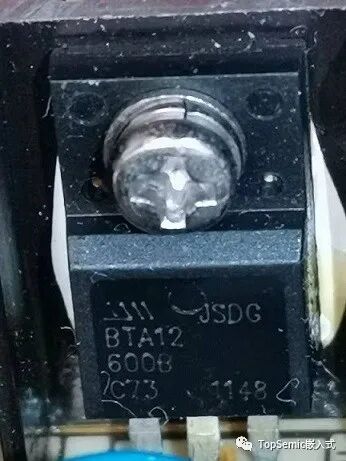
▲ Thyristor
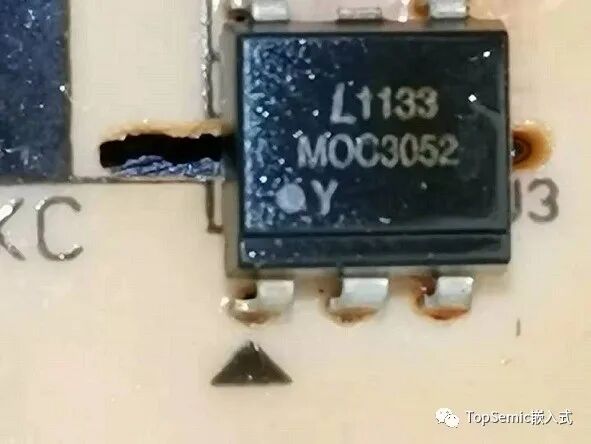
▲ Optocoupler
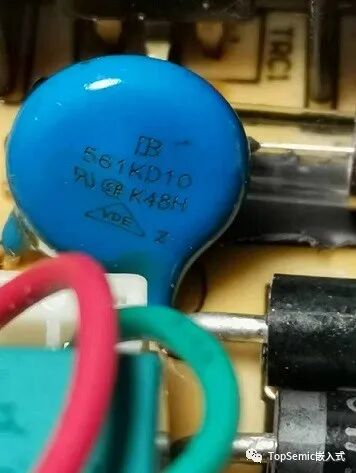
▲ VaristorThe above image shows the varistor, which is placed at the 220V inlet to prevent internal circuit damage from instantaneous high voltage.
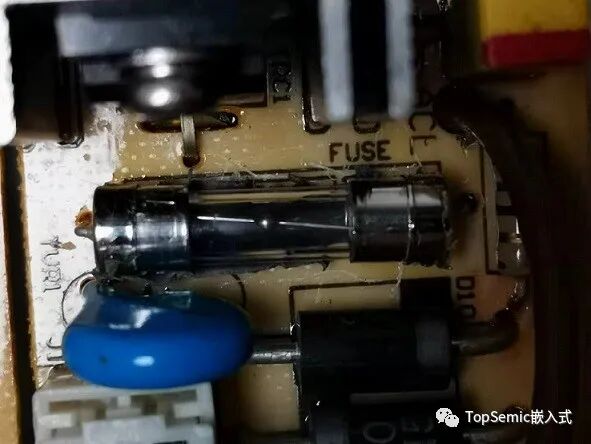
▲ Fuse
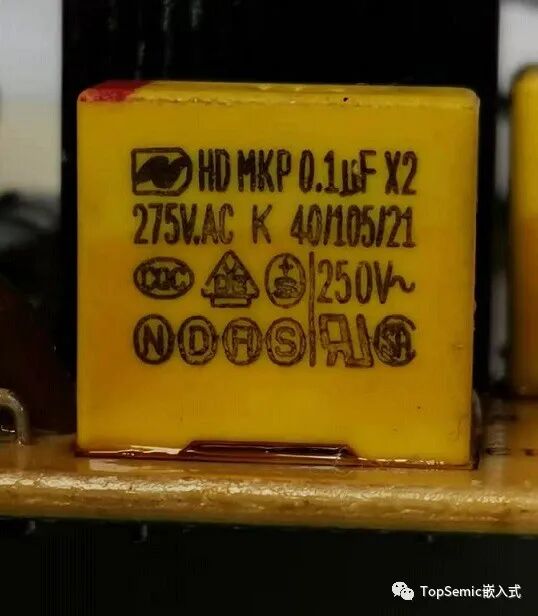
▲ Safety Capacitor
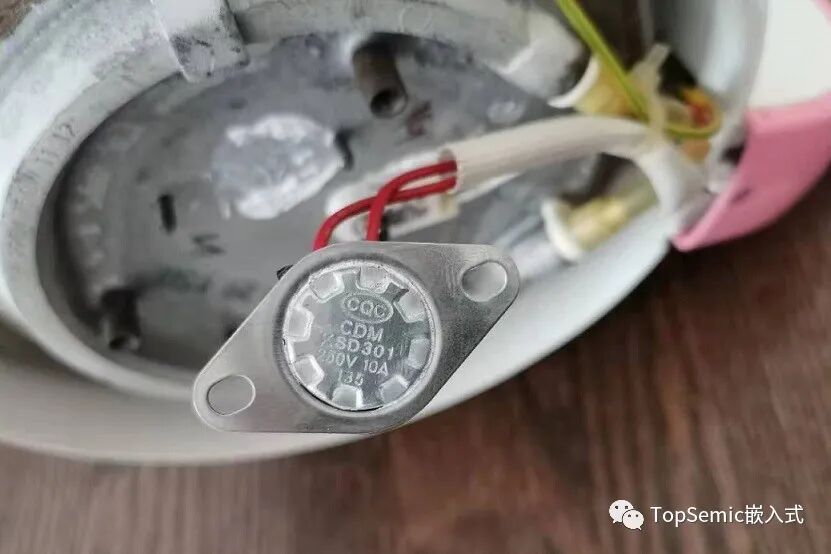
▲ Temperature Control SwitchThe electrical control principle is as follows:
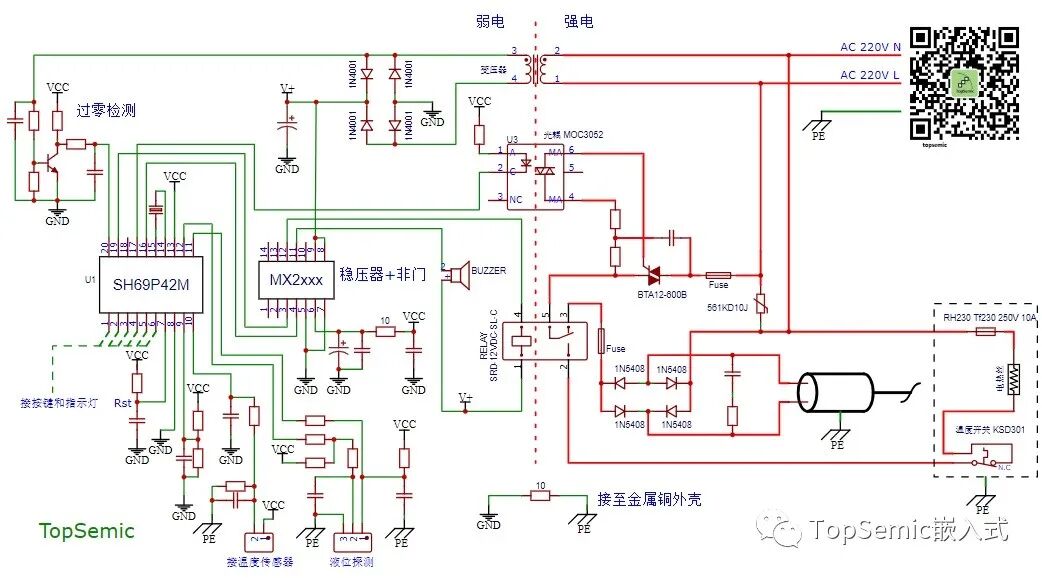
From the above image, we can see that the electrical control circuit is generally divided into high voltage and low voltage parts, isolated by the transformer, optocoupler, and relay. The microcontroller controls the on/off of the 220V voltage through the optocoupler and thyristor, and then controls the relay to allow 220V to pass through the heating wire to heat the soy milk, or to crush food through the motor. It can be seen that these two functions cannot be performed simultaneously.The microcontroller can determine the liquid temperature in the soy milk bucket by collecting the output of the temperature sensor. So how is the water level detection achieved? And what is the purpose of this zero-crossing detection circuit?Let’s leave this as a thought question; those who know can write it in the comment section~Finally, what are your thoughts on the design of this soy milk machine? Feel free to discuss!
Author: Norman
Source: TopSemic Embedded
Friendly Reminder:
Due to recent changes in the WeChat public platform push rules, many readers have reported not seeing updated articles in a timely manner. According to the latest rules, it is recommended to frequently click on “Recommended Reading, Share, Collect,” etc., to become a regular reader.
Recommended Reading:
-
[Top Secret] Internal Structure of Titan Missile Guidance Computer Exposed!
-
If electromagnetic simulation software is also banned, what domestic alternatives are available?
-
Another chip company collapses! Just three months ago, it received 600 million in financing.
Please click 【View】 to give the author a thumbs up
